Pillars of Training
THE PILLARS OF TRAINING
We follow the pillars of training to authentically develop the horse from the ground up.
Each module takes care of the horse’s mental, emotional and physical development.
Horsemanship

Horsemanship is fundamental to building a trusting partnership and confident horse. It’s the premise to everything you want to do with your horse. Whether it’s jumping, dressage, showing, trail riding, stunt riding to name a few. Understanding how and why your horse thinks and behaves the way he does is critical in developing a good foundation. In this pillar we explore what it means to be a good horseman and how we equip ourselves with the correct knowledge and skills to develop the confident horse. Horsemanship is not an entity in itself it’s a mindset and a way of being with the horse, even outside the arena. Using a shared language based on body language and energy will deepen your connection and refine your communication. Enhancing relaxation and feel through gentle observation and feedback.
Groundwork

In this module we start to look at educating the horse in movement. We start by making him aware of his body, then help him to move in a straighter and more balanced way. We use groundwork to help develop flexion and bending, and encouraging an equal distribution of weight. We introduce the academic cavesson and use this to develop good spinal alignment, swing, and stretch. Developing good biomechanics in movement will prepare your horse mentally and physically for riding.
In-Hand Work

Working with the horse in-hand brings many qualities and has been documented for years throughout history as the way many of the Old Master’s educated their horse.
On this module is really where we start to refine our communication and understanding of the primary and secondary aids. We address the horse’s natural asymmetry and the influence of his centrifugal power. It was discovered that balance and lightness can be achieved through the systematic suppling of the horse’s body and continuous relaxation of the upper jaw and neck. This module explores the 5 imbalances of the horse and how we can correct them using the gymnastic exercises of the academic school. Using these movements to; correct crookedness, which is often the root of many physical and mental issues; build collection, which is the ability to equally distribute and carry weight on the hind quarters; and develop lightness, the horse’s ability to do this more and more themselves.
You can take your in-hand work to any level of expertise or Art form. Whatever level you reach it will be greatly beneficial to your horse and it is the best way to prepare the horse to be ridden.
Lunging

The aim for lunging skills is that your horse can understand and hear you primary aids and inner picture in order to help him obtain self carriage and the right kind of engagement. This is built on onto the mechanics of your horsemanship skills and in-hand work.
Lunging is a great way to assess the level of your groundwork and how your horse carries himself. It also tells you if the horse is correctly understanding your aids, either by the rein or whip.
When your horse’s understanding and balance is good you can start to distance yourself from him and train from inside a circle. It is useful to remember that the circle is a very efficient tool in the horse’s education, if it is used correctly. If it is not used correctly it can impede the horses balance and development.
Riding

To be successful in our ridden work we must find fluidity between our groundwork skills and ridden skills. Once we have developed this fluidity we can then start seeking the correct engagement. This is often when understanding, balance and energy come together.
When we ride we predominantly use our seat. The seat is our primary aid and it is important we learn how to move correctly upon our horses back, being sure we do not disturb his balance. Our seat not only helps us obtain information about our horse’s movement and shape but it is also used to give our horse information. In this module we learn how to use your primary and secondary aids to shape and balance your horse. Depend less on your tack and ride more from your body using your interpreting and influencing seat to promote a better way of going.
‘He who wants to ride his horse healthily and nobly will have no other choice than to work on the correct bending of the haunches’ francois Robichon de la Gueriniere.
Liberty

In this module we seek to build trust and confidence through education, communication, correct body language and effective leadership.
When we remove the tack all we have is the truth. Interacting with your horse at liberty can bring some of the greatest joy. Highlighting the strength of your connection and the truth and understanding in your communication. However, being at liberty with your horse starts long before the school or your chosen training area. The first encounter you have with your horse can be the most important. Does your horse walk away from you when you go to ‘catch’ him? Does he greet you at the stable door or the gate? Working at liberty, without tools and ropes encourages us to think like a horse. and to be attentive to his needs and opinions. It gives your horse the freedom to decide and the freedom to choose your guidance. How does he really see you?!
In this module we look at not only how we can build trust and confidence through communication and effective leadership.


